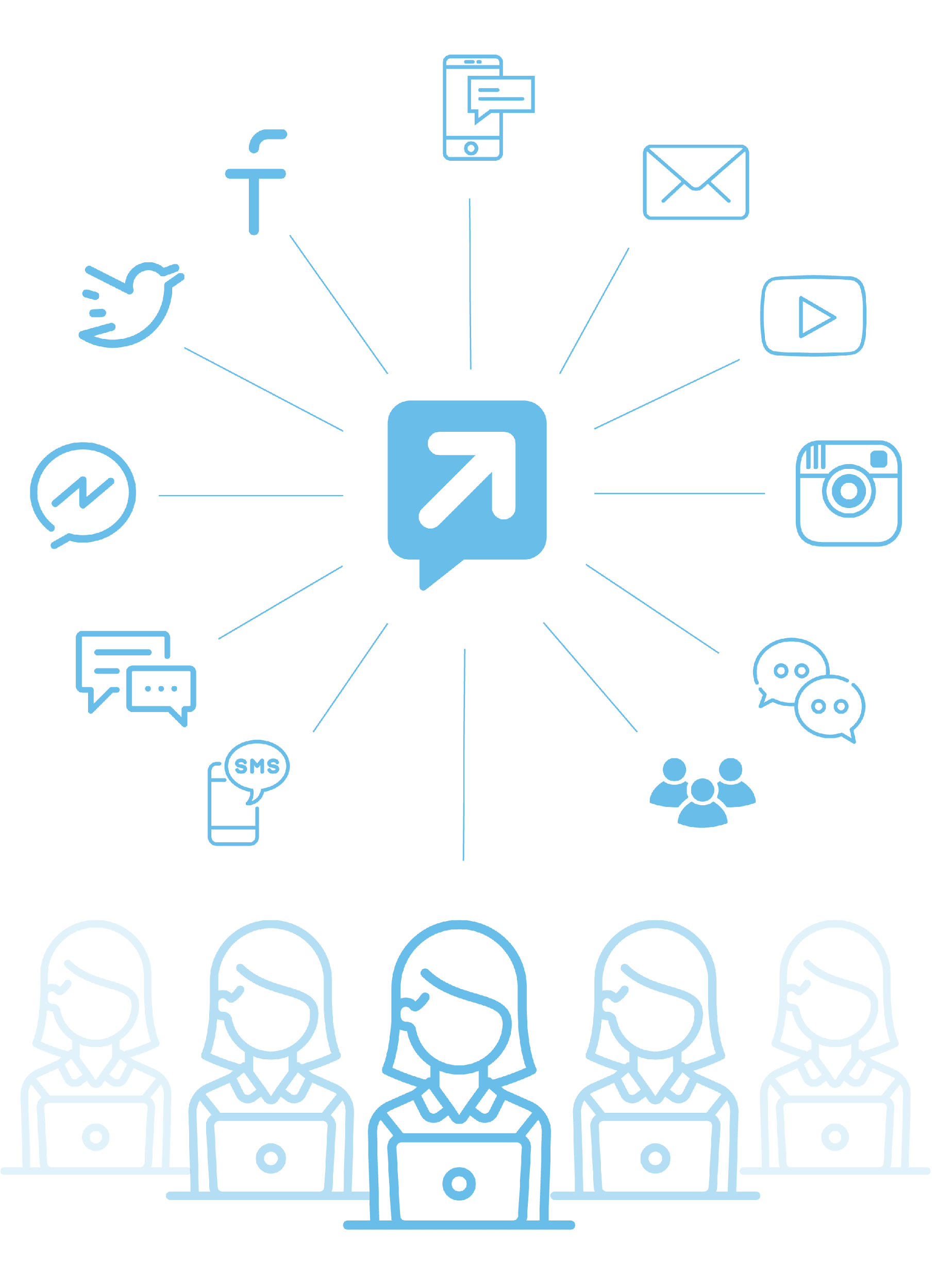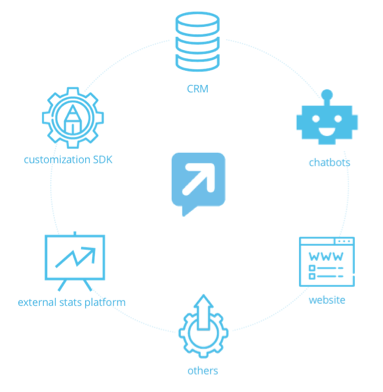
Moving beyond CRM to the full Digital Customer Interactions Platform: Dimelo

TWENTY years ago, when we wanted to talk to our bank, we’d head for the town center and speak face to face with the bank manager. To arrange for a new phone line to be installed, we would have probably begun with writing a letter.
Today, we talk to our service providers quite differently. Bank branches are closing, and we email or chat online with our telecoms providers. Home and business finances are managed via apps, and we switch providers of essential utilities with the ease of a single mouse click (or screen tap).
With competition in the majority of sectors having become so fierce, the great differentiator between competing offerings has to be customer experience: how we’re treated, how quickly, the means by which we get a resolution to our issues. The benefit for companies has been demonstrated: 79% of consumers are more loyal to brands that are easy to contact.
New generations of consumers want simple and quick connectivity with their providers and want to converse via the media with which they feel most comfortable, at a time that suits them. Messaging is one of the fastest growing channels matching these expectations: thanks to its “fast asynchronous” format, customers can send their enquiries at any time and be notified when the answer is available.
While older demographics may still prefer a chat over the phone, younger generations increasingly look to the methods by which they communicate with friends, colleagues and the most forward-thinking commercial organizations. That could be Messenger, WeChat, Facebook, or one of a whole profusion of new communication methods. Figures show these changing habits: 30 percent of consumers say they have called a customer service in 2017, vs. 40 percent in 2010. Moreover, 67 percent of them are now using a messaging app at least twice a week.
The actual preferred method depends on several factors – age, obviously, but also geographic location. WeChat, WhatsApp or Kakao are prevalent in China, Hong Kong, and South Korea respectively, while Viber might be preferred, for instance, in the Philippines. Meanwhile, in Europe, Messenger or Twitter could be the electronic lingua franca of the consumer.

Channel preferences variations across age groups
According to the United Nations, world population is set to grow to 9.8 billion by 2050, and some the biggest sources of that growth are India, Nigeria, the US and Indonesia. Population growth will, of course, bring new changes to communication methods, as will the relative makeup of the world’s peoples.
Multiple social channels, messaging, SMS and email etc. are required to ensure customer service provision is seamless across continents, or even locally. To remain competitive, it becomes increasingly important to consider these specifics and integrate various communication channels to cater for different user profiles.
This multiplication of contact points creates new channels for customer services, which should centralize the management of channels to be able to treat enquiries efficiently.
Traditional customer relationship management systems (CRM) are sometimes able to process interactions but this is not their core specialization. When customers need the highest standards of care, it starts to get difficult to collate all data, and then unify the interactions’ management. That’s where a Digital Customer Interactions platform will be relevant: coping with the inevitable changes, but also empowering staff with a meta-view of all interactions.
There will always be a certain reliance on various social media and email, so finding a partner whose platform can bring every channel together is a challenge, that is, until now. That’s where Dimelo comes into its own.

Overview of channels managed by Dimelo
Dimelo’s platform interfaces seamlessly with dozens of communications channels including Viber, Messenger, Facebook, email, and chat but also boasts an open API through which new platforms can communicate – proprietary apps on customers’ smartphones, for example.
Dimelo’s API also allows integration with existing CRM systems to provide a 360 degree view of the customer. The platform can connect to chatbots, allowing companies to make the most of this new technology and facilitate the collaboration between human and artificial intelligence (AI) on a variety of channels.
Large companies such as Ooredoo Myanmar, iflix, AXA and Orange are using Dimelo to process the large volumes of interactions they receive daily. Among other benefits, using a single interactions platform helps them reduce their average handling time, increase their first contact resolution rate and balance their workload more efficiently. Overall, this results in improved customer satisfaction.

Dimelo’s open ecosystem
In the words of Stéphane Lee Dimelo’s co-founder and CEO:
“A Digital Customer Interactions Platform is a tool dedicated to manage volume of interactions with customers on digital touch points. By providing robust channel management and sophisticated routing algorithms, it enables companies to be efficient at managing all those customer interactions. This contributes to providing the right customer satisfaction and NPS.”
To see how the Dimelo platform can bring unification to all your different communication channels and become an integral part of your expanding enterprise, get in contact today and request a demonstration.
READ MORE
- Ethical AI: The renewed importance of safeguarding data and customer privacy in Generative AI applications
- How Japan balances AI-driven opportunities with cybersecurity needs
- Deploying SASE: Benchmarking your approach
- Insurance everywhere all at once: the digital transformation of the APAC insurance industry
- Google parent Alphabet eyes HubSpot: A potential acquisition shaping the future of CRM
